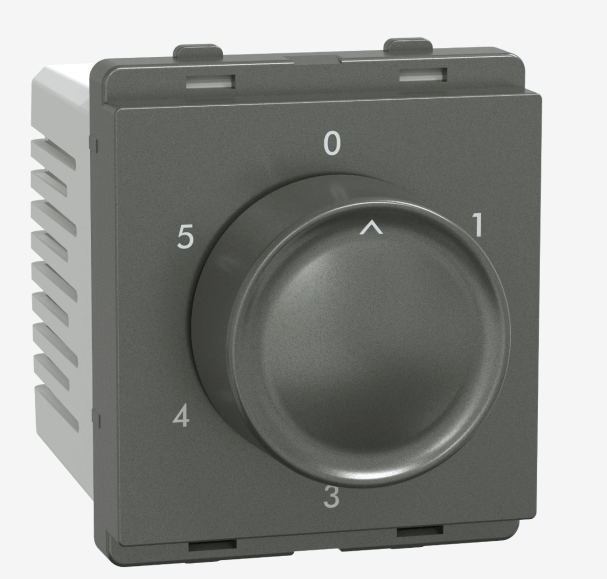Upgrading From A Fan Regulator Old Model To A Modern One: Is It Worth It?

Ceiling fans are an integral part of many households, providing a cost-effective and energy-efficient cooling solution. Over the years, advancements in electrical technology have transformed the way ceiling fans operate, particularly with the development of modern fan regulators. Many homes still use a fan regulator old model, which, while functional, lacks efficiency and advanced features.
Upgrading to a modern fan regulator offers numerous benefits, including energy savings, better control, and improved aesthetics. However, many homeowners hesitate due to concerns about the ceiling fan regulator price and whether the investment is worth it. This guide explores the differences between old and modern fan regulators, their pros and cons, and whether upgrading makes financial and practical sense.
Understanding the Fan Regulator Old Model
A fan regulator old model is a device used to control the speed of a ceiling fan by adjusting the voltage supplied to the motor. These fan regulators have been in use for decades and are still found in many homes.
Types of Old Model Fan Regulators
Resistive Fan Regulators
These regulators work by using a resistor to reduce voltage and control fan speed.
They generate heat, leading to energy loss.
Generally inefficient compared to modern electronic alternatives.
Rotary Fan Regulators
Feature a mechanical knob to adjust speed.
Often produce a humming noise at lower speeds.
Susceptible to wear and tear over time.
Capacitor-Based Fan Regulators
Use capacitors to adjust voltage and speed.
More efficient than resistive regulators but still outdated compared to electronic versions.
Limitations of Using a Fan Regulator Old Model
Energy Inefficiency: Older models waste a significant amount of energy through heat dissipation.
Noisy Operation: Many old regulators produce a humming noise, especially at low speeds.
Limited Speed Control: Older models often have fewer speed settings and lack precision.
Shorter Lifespan: Mechanical wear and tear can cause performance issues over time.
What is a Modern Fan Regulator?
Modern fan regulators have been designed to overcome the limitations of older models by incorporating advanced electronics. These regulators offer improved energy efficiency, durability, and additional features for user convenience.
Types of Modern Fan Regulators
Electronic Fan Regulators
Use semiconductor technology to control fan speed without excessive energy loss.
Operate silently with smooth transitions between speeds.
Offer better energy efficiency compared to older models.
Smart Fan Regulators
Integrated with smart home systems for remote control via mobile apps or voice commands.
Allow scheduling and automation for added convenience.
Provide real-time energy consumption data for better efficiency.
Key Benefits of Modern Fan Regulators
Higher Energy Efficiency: Reduces electricity consumption by minimizing heat loss.
Silent Operation: Eliminates the humming noise associated with resistive and rotary models.
Longer Lifespan: Solid-state electronic components last longer than mechanical switches.
Precise Speed Control: Provides smoother and more accurate adjustments.
Smart Features: Enable remote control, automation, and integration with home automation systems.
Comparing Fan Regulator Old Model vs. Modern Fan Regulator
Energy Consumption
Old regulators use resistors that generate heat, wasting energy.
Modern electronic regulators consume less power, reducing electricity bills.
Noise Levels
Older models can produce a noticeable humming sound.
Modern regulators operate silently.
Speed Control Accuracy
Traditional regulators often have fixed speed settings with limited control.
Modern regulators offer more precise adjustments.
Heat Generation
Old resistive regulators generate unnecessary heat.
Electronic models stay cool, making them safer and more efficient.
Durability and Maintenance
Mechanical parts in old regulators wear out faster.
Solid-state electronics in modern regulators last longer with minimal maintenance.
Cost Considerations
The ceiling fan regulator price for old models is generally lower upfront.
Modern regulators may have a higher initial cost but provide long-term savings through reduced electricity consumption.
Challenges of Upgrading to a Modern Fan Regulator

While the benefits of upgrading are clear, there are a few challenges that homeowners should consider:
Higher Initial Cost
The ceiling fan regulator price for modern models is generally higher compared to old resistive regulators.
However, the long-term energy savings help offset the initial investment.
Installation Considerations
Some modern regulators may require minor rewiring or professional installation.
Smart regulators may need additional setup for integration with home automation systems.
Compatibility Issues
Some older ceiling fans may not be compatible with advanced electronic regulators.
It is important to check specifications before purchasing.
How to Choose the Right Modern Fan Regulator
If you decide to upgrade, here are some factors to consider when selecting a modern fan regulator:
Energy Efficiency
Choose models that consume less electricity and offer better power regulation.
Noise Levels
Opt for silent-operating electronic regulators for improved comfort.
Control Features
Decide whether you need a basic electronic regulator or one with smart features.
Price vs. Value
Compare different options based on the ceiling fan regulator price and their long-term cost-effectiveness.
Brand and Warranty
Buy from reputable brands that offer warranties and reliable customer support.
Smart Features (Optional)
If you want additional convenience, consider smart regulators that can be controlled remotely.
Is Upgrading Worth It?
When Should You Upgrade?
If your old regulator is inefficient and increases electricity bills.
If your current fan regulator produces noise or overheating issues.
If you want a more durable and maintenance-free solution.
If you are integrating your home with smart devices.
When Can You Delay Upgrading?
If your current fan regulator is still working efficiently.
If budget constraints prevent you from upgrading immediately.
If your ceiling fan is incompatible with modern electronic regulators.
Conclusion
Upgrading from a fan regulator old model to a modern one is a wise decision for those looking to enhance energy efficiency, durability, and convenience. Modern fan regulators offer numerous advantages, including silent operation, better speed control, and integration with smart home systems.
While the ceiling fan regulator price of advanced models may be higher, the long-term savings on electricity bills and reduced maintenance costs make them a cost-effective choice. Homeowners looking for reliable and high-quality fan regulators should consider trusted brands known for their innovation in electrical solutions.
For those seeking premium-quality electrical components, Lauritz Knudsen Electrical & Automation offers state-of-the-art fan regulators designed for superior performance and efficiency. Whether you’re upgrading your home or improving energy consumption, their advanced solutions provide the best in modern electrical technology.




